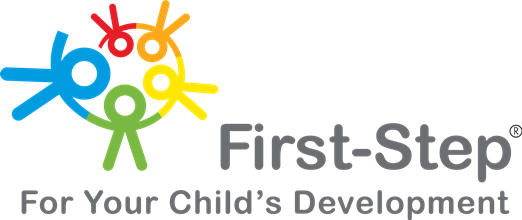
6-9 Months
First Step Workshops – From 6 to 9 months
The challenge of development
This workshop welcomes you and your baby at a stage of highly significant developmental functions: rolling over completely, raising the bottom, first attempts at crawling, stomach slithering – up to full crawling. Unlike the previous workshop, where we focused on
preparing for the milestones, in this one the milestones should happen. Parents learn how to encourage babies to move and start “exercising” – performing the actions vital for their development.
It’s a dramatic stage for baby and parents alike. For the first time ever, baby encounters the need to move and seek the road toward independent movement. Babies will spend hours developing movement, on condition they are surrounded by the right environment.
For parents, it’s dramatic because they realize that if those actions aren’t performed at the right time, or happen too soon – it can reasonably be assumed that there is a developmental problem.
Diagnosis is an integral part of each session: we answer parents’ questions, and demonstrate exercises that help smoothly achieve the vital milestones of this stage.
As well as motoric function – babies are also at a new stage of expressing needs; they are starting to eat solids, and we hear the first babblings that ultimately leads to speech. Our developmental support responds directly to parents on these topics too.
The chief topics that the workshop deals with – How do babies start crawling?
Well…babies don’t start crawling one fine day, because a biological clock tells them to. Crawling is a highly complex function, that begins in previous development stages, and depends on them. Babies who haven’t had enough tummy-time or the correct sensory stimulation, who didn’t roll over symmetrically, or failed to create a complete balance system – often find it hard to begin crawling, or may crawl in an unsynchronized and wrong manner.
At this workshop, we suggest exercises that ‘break down’ crawling into components, which helps babies create the right conditions for crawling to happen. Parents learn about the long learning journey their children are starting: they see close-up and in detail what must happen. They realize that development isn’t a given. They also learn not to disturb the natural process, and how to create a challenging environment for baby.
Should I join a workshop if my baby’s already crawling?
Babies who are already crawling need developmental support too, to ensure that all the movement elements are in place. We use the Feldenkrais method to analyze the crawling movement, to see whether everything is there – timing, strength, hand-foot coordination, and flexibility.
We show that each movement consists of three vital qualities: bending, straightening, and rotation (how the back rotates in relation to a fixed part). These three qualities must be present in each significant function – rolling over, crawling, and eventually– walking. If one quality is lacking, baby will still crawl, but her experience of crawling will be impaired, and this will only come to light much later.
Using the three qualities can be expressed at age five, when the child’s movements are awkward, s/he falls over a lot, avoids joining friends in the playground, and becomes socially isolated. But because it’s all in the future, which seems so distant, it can be hard for parents to grasp the problem. They say “But he’s crawling…”. The question is of course, how he’s crawling. When motor development is supervised, crawling has a far better quality.
Dr. Moshe Feldenkrais used to say that people blessed with more flexible movement and a range of qualities are better organized and directed in all aspects of their lives. And that’s exactly our goal.
Remember that there’s a great lack of movement in contemporary western society
The connection between movement and independent behavior
The exercises demonstrated at our workshops help parents cope with the significant stage when babies grow more independent, have a presence, and make demands – as compared to the first months. We see the start of a process that intensifies over the coming months – motoric independence has implications for social independence and baby’s capacity to separate from mother. Accordingly, some workshop sessions address related questions, for example: When should I stop nursing? How do I cope with solid food and the mess? What should I do when baby touches everything, and puts it all in her mouth? Parents attending the workshop describe their anxiety over baby’s new independence – should they allow him to touch everything? What’s dangerous, and where do restrictions confuse the child’s natural senses? Our workshop gives professional answers to all these dilemmas.
Transition to sitting
The transition to sitting up is a basic function in baby’s development. It is related to a stable balance system and the infant’s ability to keep herself stable. Often, parents are proud that their baby can sit up in a bouncer, and are happy that the baby responds to the environment, and creates contact.
But this isn’t the right way developmentally, since it creates rigid sitting instead of flexible stability (like a tree bending with the wind).
Proper sitting happens when we see rotation and bending of the back in a baby, when he pushes up from his hands and knees, usually at around 6-8 months.
It’s important to understand that when a baby stands up, he needs good balance. Babies often seem to have gone through all stages…but have difficulties with the stage of standing and the start of walking. This is due to problems with balance that were not treated in time, or because previous stages were acquired incorrectly, and the system was not allowed to mature.
The importance of touch
In this workshop we also devote several sessions to touch and the senses. Parents know when they feel a strong need for contact, and their baby needs meaningful contact more than anything else.
Workshop participants learns different kinds of touch, and the deep touching that allows baby to fully experience his body, and to achieve a completely calm and relaxed state.
A baby in the home
Another frequently asked question at workshops is – how does the domestic scene function when there’s an active baby around? It’s the norm in western society that baby rules the roost – she determines if the house is hushed – “She needs to fall asleep”, causes situations when the entire household is focused just on her, everyone’s concerned about her, and fusses around her constantly.
You’ll learn how to react to the numerous difficulties and frustrations of infants of this age, how to cope with frequent crying, how much to “pick them up”, and how to respond to the baby in ways that won’t delay his development. Many mothers, for example, “understand too much”. Sounds weird? Yet we’ve seen this frequently. Some mothers respond to the baby at this age as they did when baby was one month old. At that stage – responding was vital. Now though, the baby needs a little frustration and self-expression – not just immediate response. When mother hands him every object he wants…why should he start crawling towards it? And if his mother speaks for him – why should he start talking?!
At the workshop you’ll learn what babies really need at this stage. We suggest that parents widen the baby’s range, allow a tad bit of frustration, permit some efforts to fail….and in this way, encourage important life-skills that will stay with him over the years.
The workshop as a diagnostic tool
The development stage that unfolds from six to nine months is a quite dramatic one, where “motoric achievements” mature and become visible.
It can be a tough stage for parents: Why isn’t baby crawling yet? Why does he push himself up to a sitting position from his back, not from all-fours?
These points derive from how the nervous system reacts to the surroundings. In fact, the reaction is generated through the senses, that are all situated in the head region – hearing, sight, taste. The senses encourage children to try and communicate with the environment, and it’s the motoric system that makes communication possible.
But sometimes the connection between the central nervous system and the body is impaired, and the body suggests an “ineffective response”. For example a baby who hasn’t had enough tummy time and was on his back for long periods, also wants to create contact with the surroundings. As a result – he “pushes himself forward”, to a sitting position. The problem is that he’s investing too much energy for any action, and he must use too much strength to reach an object, for example. Moreover, the baby’s skeletal system is not working according to the relevant laws of biochemistry, and he is in a constant state of deficit.
During the workshop sessions, these and other situations are quickly identified by the instructor, who suggests response that will re-create the right movement for the baby’s body. If necessary, parent and baby can be referred for a diagnosis and individual classes.

